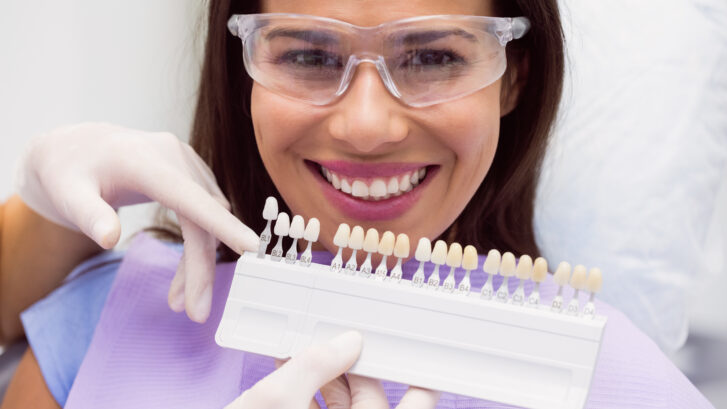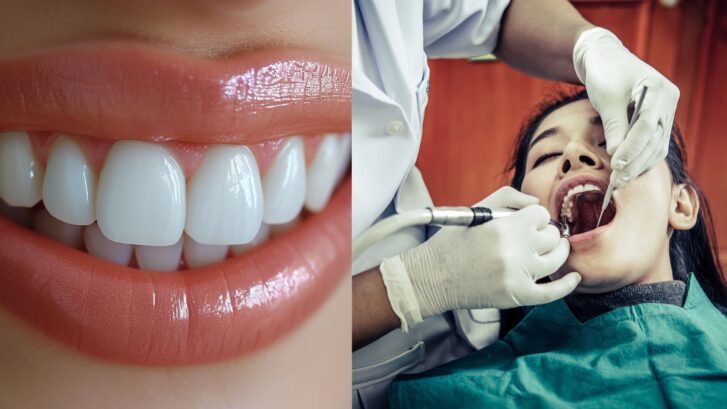Same-Day Smile Makeovers: How Composite Veneers Make It Possible
Imagine transforming your smile in a single day! Same-day smile makeovers are making that dream a reality, and composite veneers are at the heart of this innovation. These veneers offer a quick, cost-effective way to improve your smile with minimal prep time. So, how do composite veneers make a same-day smile makeover possible, and are they the right choice for you? Let’s dive into everything you need to know.
What Are Composite Veneers?
Composite veneers are thin, tooth-colored shells applied to the front surface of your teeth to enhance their appearance. Unlike porcelain veneers, which are typically created in a lab, composite veneers can be crafted directly onto your teeth during a single dental visit. Dentists use a composite resin material, similar to what’s used for tooth-colored fillings, to reshape and color-correct teeth for an instant smile transformation.
Key Features of Composite Veneers:
- Quick Application: Composite veneers can be applied in one appointment, making them ideal for same-day makeovers.
- Customizable: Dentists can adjust the color and shape of composite veneers for a personalized fit.
- Cost-Effective: Composite veneers are usually less expensive than porcelain veneers, making them accessible for more patients.
- Minimally Invasive: In many cases, little to no tooth enamel needs to be removed, making the process reversible.
Why Choose Composite Veneers for a Same-Day Smile Makeover?
Composite veneers are ideal for patients looking to improve their smile quickly. Unlike porcelain veneers, which typically require multiple visits, composite veneers can be applied and shaped directly onto the teeth in one session. This rapid application makes them perfect for individuals with busy schedules or those seeking an immediate confidence boost.
Top Benefits of Composite Veneers for Same-Day Makeovers:
- Fast Results: You can walk out with a brand-new smile in just a few hours.
- Flexible and Repairable: Composite veneers are easier to repair than porcelain, which means any small chips or damage can be quickly fixed.
- Lower Cost: Composite veneers are generally more affordable, providing a great cosmetic solution without the hefty price tag.
- Natural-Looking Finish: With skilled application, composite veneers can closely mimic the look of natural teeth.
The Process of Getting Composite Veneers
Composite veneers are crafted by layering and shaping composite resin directly onto your teeth. Here’s what you can expect during the same-day makeover process:
- Consultation: Your dentist will assess your smile, discuss your aesthetic goals, and confirm that composite veneers are the right option.
- Preparation: In most cases, minimal preparation is required. Your dentist may gently etch the surface of your teeth for a better bond but won’t typically need to remove much enamel.
- Color Matching: The composite resin will be color-matched to your natural teeth or adjusted for a brighter, whiter smile.
- Application: The dentist applies the resin in layers, molding it to the desired shape and thickness.
- Sculpting and Polishing: Once applied, the resin is hardened using a curing light, then sculpted and polished to create a smooth, natural finish.
In just one session, you’ll have a refreshed, radiant smile that looks and feels natural.
Who Is a Good Candidate for Composite Veneers?
Composite veneers are a versatile cosmetic solution that can address a wide range of dental concerns, including:
- Chipped or Cracked Teeth: Composite veneers can mask minor chips and cracks, restoring your smile’s appearance.
- Discoloration: They are a great option for covering stains that teeth whitening can’t resolve.
- Gaps: Composite veneers can close small gaps between teeth, creating a more uniform look.
- Slight Misalignment: If you have minor alignment issues, composite veneers can help create a straighter smile.
- Misshapen or Worn Teeth: Composite resin can be used to reshape teeth, providing a balanced, aesthetic smile.
While composite veneers can address many cosmetic issues, they may not be ideal for more severe dental concerns. Patients with significant misalignment, large gaps, or severe tooth damage may need more extensive treatments, such as orthodontics or porcelain veneers, to achieve the best results.
Caring for Your Composite Veneers
While composite veneers are durable, they require proper care to maintain their appearance and longevity. Here are some tips for keeping your new smile in great shape:
- Brush and Floss Regularly: Treat your composite veneers like natural teeth by brushing twice a day and flossing daily.
- Avoid Hard or Sticky Foods: Chewing ice or hard candies can damage veneers, so it’s best to avoid them.
- Limit Staining Foods: Foods and beverages like coffee, wine, and berries can stain composite resin. While it’s okay to consume these, rinse your mouth or brush after indulging to reduce the risk of discoloration.
- Regular Dental Checkups: Visit your dentist regularly for checkups and cleanings to ensure your veneers remain in top condition.
Composite veneers have transformed the world of cosmetic dentistry, offering patients a same-day smile makeover that is both convenient and cost-effective. With the ability to address a wide range of dental concerns, composite veneers provide an immediate confidence boost and a natural-looking enhancement to your smile.
If you’re considering a same-day smile makeover, consult with your dentist to see if composite veneers are the right choice for you. This quick, minimally invasive procedure could be the key to the smile of your dreams—all in just one appointment!



